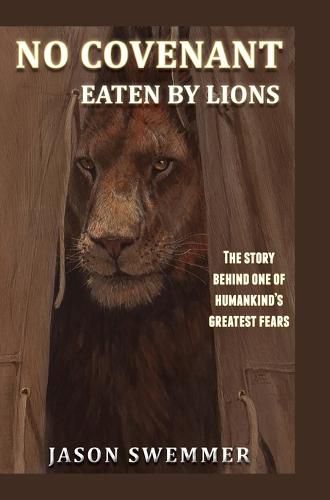Readings Newsletter
Become a Readings Member to make your shopping experience even easier.
Sign in or sign up for free!
You’re not far away from qualifying for FREE standard shipping within Australia
You’ve qualified for FREE standard shipping within Australia
The cart is loading…






This title is printed to order. This book may have been self-published. If so, we cannot guarantee the quality of the content. In the main most books will have gone through the editing process however some may not. We therefore suggest that you be aware of this before ordering this book. If in doubt check either the author or publisher’s details as we are unable to accept any returns unless they are faulty. Please contact us if you have any questions.
African lions are currently topical; as a species, their numbers in the wild have decreased dramatically over the past century. This is mainly due to habitat loss, a result of human encroachment. Given that reality, hunting and poaching have further damaged populations. Despite this - or rather, because of this shared proximity - lions are closer to people, and the two don’t mix well at all. Despite the media fluff, lions are large, powerful and dangerous predators, and people are unquestionably prey-sized since the time eons ago when we started sharing space.
The concept of people being hunted and consumed has always morbidly fascinated people and interested scientists. Man also likes to be frightened, provided he can still be safe from that which frightens him. Many people across Africa don’t have that luxury and are exposed daily to what we in developed countries consider ancient primal dangers. Having grown up in Africa and with three decades of interest, research and exposure to the subject matter to varying degrees, I have recounted some historical events from the past, some newer ones, and looked at solutions to save people and conserve the species.
$9.00 standard shipping within Australia
FREE standard shipping within Australia for orders over $100.00
Express & International shipping calculated at checkout
This title is printed to order. This book may have been self-published. If so, we cannot guarantee the quality of the content. In the main most books will have gone through the editing process however some may not. We therefore suggest that you be aware of this before ordering this book. If in doubt check either the author or publisher’s details as we are unable to accept any returns unless they are faulty. Please contact us if you have any questions.
African lions are currently topical; as a species, their numbers in the wild have decreased dramatically over the past century. This is mainly due to habitat loss, a result of human encroachment. Given that reality, hunting and poaching have further damaged populations. Despite this - or rather, because of this shared proximity - lions are closer to people, and the two don’t mix well at all. Despite the media fluff, lions are large, powerful and dangerous predators, and people are unquestionably prey-sized since the time eons ago when we started sharing space.
The concept of people being hunted and consumed has always morbidly fascinated people and interested scientists. Man also likes to be frightened, provided he can still be safe from that which frightens him. Many people across Africa don’t have that luxury and are exposed daily to what we in developed countries consider ancient primal dangers. Having grown up in Africa and with three decades of interest, research and exposure to the subject matter to varying degrees, I have recounted some historical events from the past, some newer ones, and looked at solutions to save people and conserve the species.